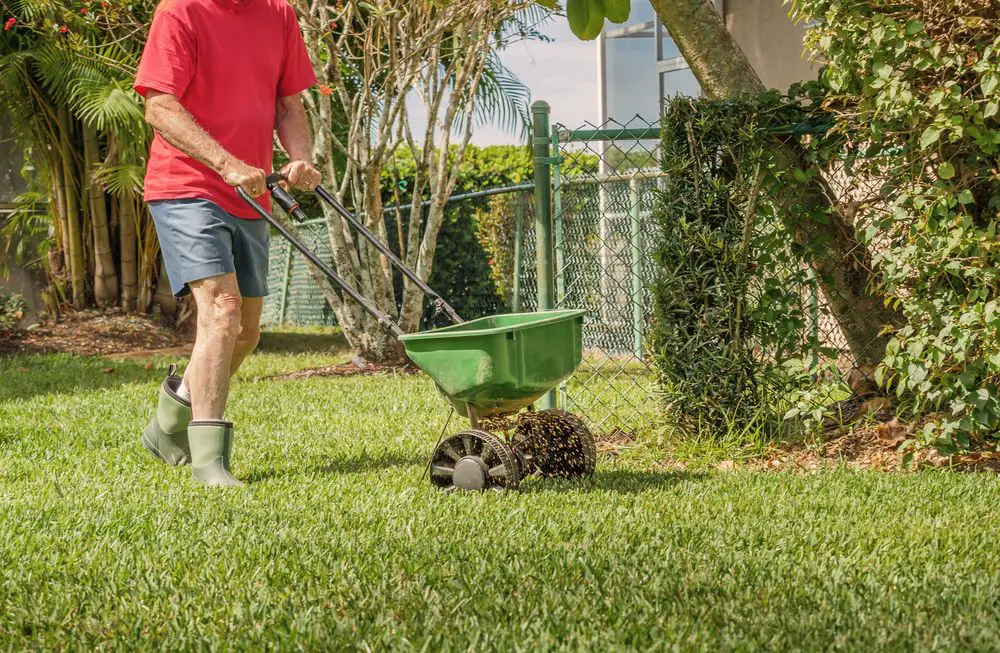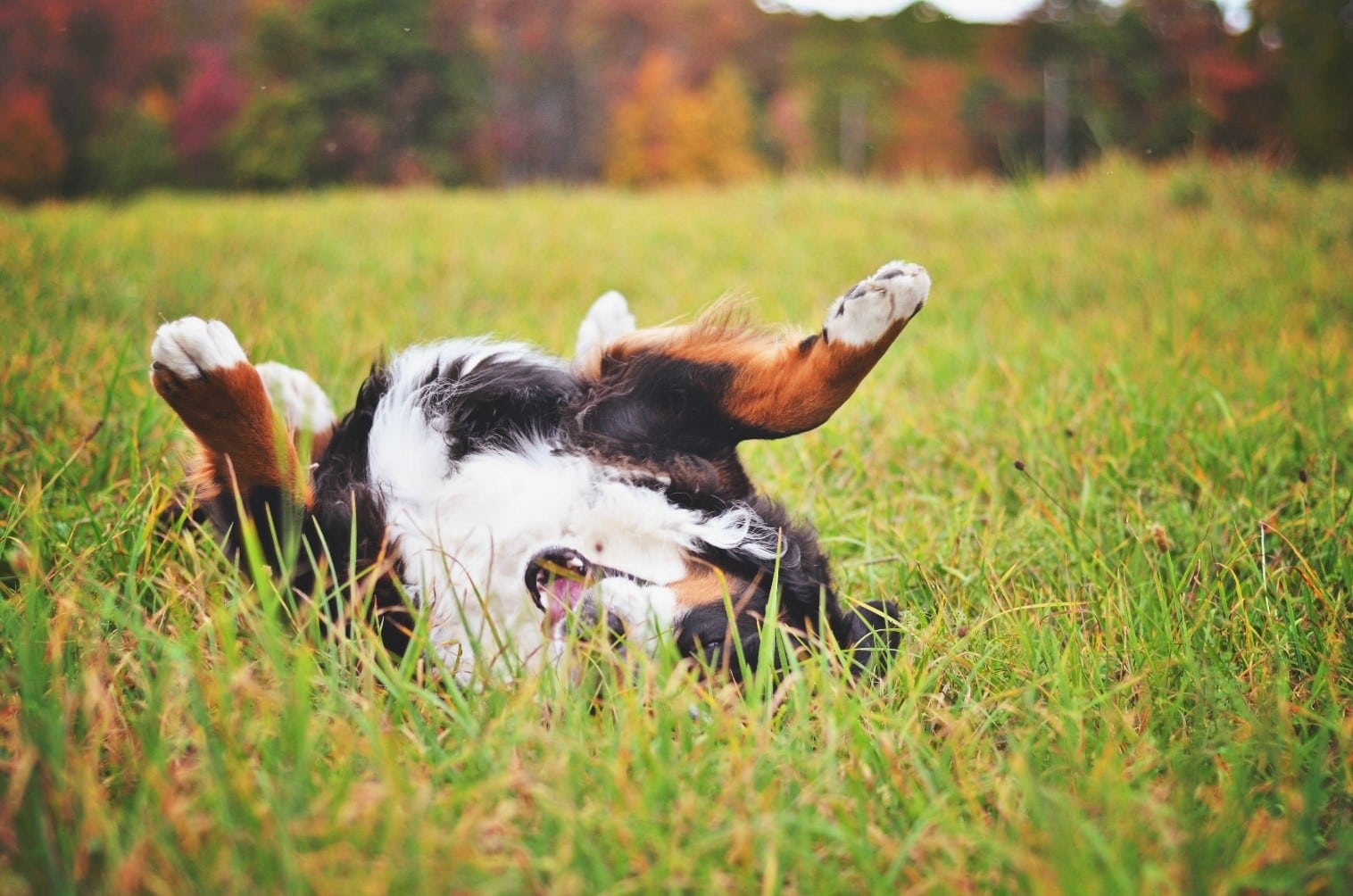Lime is applied on lawns to keep them in top shape. Lawns are treated with lime to reduce the soil’s acidity and ensure your grass grows well.
Lawn lime is bad for dogs. Lime is a chemical, and like most other chemicals, it is toxic and can be quite a threat to dogs who like to play, walk, or run around your lawn. Dogs exposed to chemicals can suffer from their harmful effects.
Some forms of lawn lime are safe, but just the same, there are some tips you need to know before letting your dog out on your lawn that has been sprayed with lime.
What is Lime?
Lime is from limestone rock. It has many uses, but it is mainly used as a fertilizer because it is rich in magnesium carbonate and calcium carbonate.
The soil’s pH increases when lime is added to it. An increase in pH level makes the soil more alkaline and less acidic.
Lime is not a fertilizer. Its primary function is to reduce the acidity of soil and increase your lawn’s ability to absorb nutrients and minerals from the soil.

A pH level of 3.0 means soil is acidic. Grass cannot grow well with this soil condition. Lawn lime needs to be added to raise or balance the pH level and make it less acidic.
A pH level of 5 is more acidic than soil with a pH level of 6. Soil with a PH level of 6 is more acidic than soil with a pH level of 7. Just like most plants, your lawn will grow better on slightly acidic soil.
Before applying lawn lime, it is best to know your lawn’s soil pH or its level of acidity. Soil needs to be slightly acidic. It needs to be acidic enough to absorb nutrients and fertilizers to keep your grass growing.
Overly acidic soil will make your lawn grass struggle to grow. These are the warning signs of too acidic soil:
- Clay or sandy soil
- Lawn moss is present.
- Increase the presence of lawn weeds
- Presence of insect pests and diseases
- The fertilizer is not working.
- Grass turns yellow
More importantly, when soil is too acidic, grass will not grow healthy and lush even when treated with top quality fertilizer.
Fall and early spring is the best time to apply lime to your lawn. During fall snow, rain, and the freezing and thawing cycles, break down the lime and allow it to work on your lawn. Most limes take many months to alter the pH of your soil, but some lime, especially the pellet-like form, immediately changes the pH of soil.
The type of lime to use on your lawn depends on the soil, type of grass, and climate. The pellet type, though, is easier to apply than the powder form.
Lime can be applied either through a rotary spreader or drop-style. A spread, though, works better.
Lime is suitable for many purposes but not for dogs and other family pets!
Different Types of Lime
Lawn lime is available in different forms. Each type of lime is designed for a specific use.
Caustic Lime
Caustic lime or quicklime works faster but may cause some skin irritation on people and pets. It is, therefore, not your best option if you have pets.
Non-Caustic Lime
Non-caustic lime is considered non-toxic, but it does not mean it is super safe to use around people and pets. When a substance or material is non-toxic, it means it does not cause severe illness or death, but just the same, it can be harmful. Non-caustic lime comes in dust form, making them easy to be inhaled and blown by the wind.
Lime Pellets
Lime pellets are the safest and most straightforward type of lime to use on your lawn. This type of lawn lime is often used in modest yards. However, it can be more challenging to estimate the number of pellets to apply to a lawn.
Can Lawn Lime Hurt your Dog?
Despite the many benefits of liming a lawn, many homeowners still worry about how lawn lime can affect their dogs’ health.
Lime pellets can cause a severe rash on both people and their pets – otherwise, it’s relatively safe for humans and your furry friends. Don’t let your dog play on the lawn if it has been treated with lawn lime.
Dogs may come into contact with the lime, and they may react badly to it – back to the rash, skin irritation and, possible burns.
The purpose of applying lime to your lawn is to control the acidity of the soil. The alkalinity of lime means that when dogs contact the lime pellets, they may develop severe skin irritation. The same holds with humans.
Hydrated lime is the most dangerous type of lime. If your dog accidentally swallows it, its digestive tract may develop serious burns. Severe caustic burns may also permanently damage the skin of your dog.
The only sure way to keep your dog safe is to keep him off your limed lawn until such time that the lime, whether hydrated, powder, or pellets, has been entirely absorbed by the soil.
How Long After Lawn Treatment Is It Safe for Dogs And Other Pets?
In general, lime is not as toxic as you think it is. Over time, the ground will absorb the lime, and once this happens, your dog can be free to play on your lawn without any danger or risks.
Lime powder is absorbed quicker by the soil than lime pellets. Large quantities of lime powder, however, can be messy on your lawn. Dust and residue from the lime powder may set in areas where your dog loves to use it.
Using lime pellets is the safest and easiest way to apply lime to your lawn. They are also safe for your dogs.
It takes about two to three years after application for the lime and soil to completely react with each other and alter the earth’s acidity.
Some benefits of the application of lime, though, can be seen within the first few months.
Over time, the ground will absorb the lime. Once lime has been fully absorbed, your dog is free to play on your lawn.
Remember that allowing your dog to play in the lawn scattered with undissolved lime powder or pellets is extremely dangerous and harmful.
While exposure to lime will not make your dog seriously ill, it is still best not to allow your dog to run around the lawn that has been spread by lime during the first few months from application.
Any form of lime can cause lung, eye, and skin irritation; thus, lime should be allowed to fully integrate into the soil before people and animals should be on the lawn.
5 Tips to Protect your Dogs from Lawn Lime
Your dog might eat undissolved lime powder or pellets applied to your lawn. Even if you are extremely careful, it cannot be avoided that your dog may end up eating some of the lime. You will only get to know of the situation when your dog develops skin irritation and digestive problems (constipation and stomach ache).
Here are some tips on how to protect your dogs from lime during application on your lawn and while waiting for the soil to absorb lime.
1. Keep your dog’s indoors during application because lime particles are incredibly toxic. It can be harmful to your dog to inhale lime or get some lime powder into its eyes. Lime pellets can look appealing to dogs, and they may eat them, causing imminent danger.
2. Keep your dog away from the lawn immediately after the application of lime. It may be safe for your dog to play on the lawn again after heavy rain. Rain can quickly dissolve lime and allows the soil to absorb it fully. During the dry season, you can frequently water your lawn for a few days until you are sure all the lime has been dissolved. Then, you can let your dog play on the lawn again.
3. Clean up all tools and equipment used during the lime application. Throw away all the lime bags so your dog will not lick the remaining lime particles from the opened bags.
4. Make sure to clean up scattered lime pellets and powder in the area surrounding your lawn. Remember, your dog will eat almost anything.
5. If your dog happens to eat any amount of lime, immediately take him to the vet. Never attempt to make your dog vomit, as it may cause his digestive system to have more severe burns.
Final Thoughts
Dogs will eat anything. While it is essential to lime your lawn, it is also equally important to keep your dog off the lawn while liming until the lime has been absorbed by the soil.
While lime is much safer for pets than other substances or fertilizers you may use on your lawn, it still should never be ingested or eaten by your dogs because lawn lime is dangerous for dogs. If you think your dog has eaten lime, take him immediately to the vet.
Jenny Marie
Tribal Writer
Edited by Patricia Godwin

